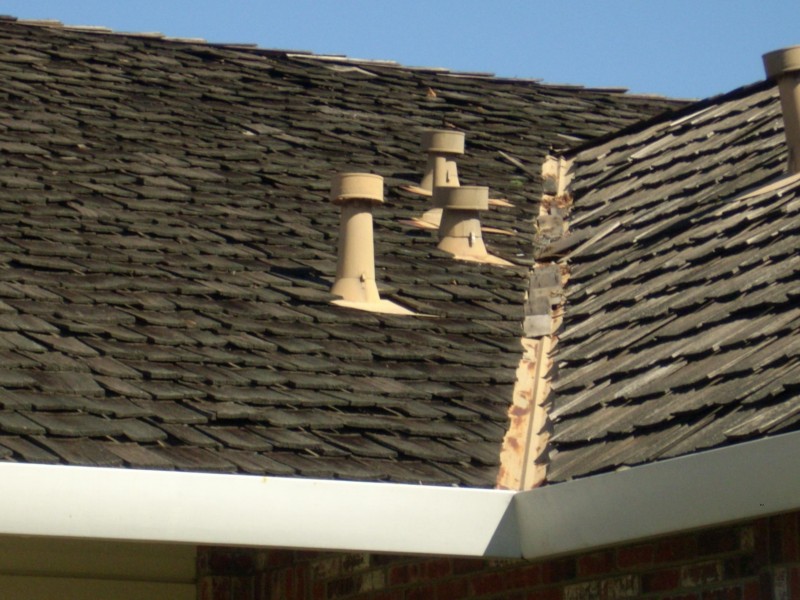Seasons of roofing

By HER Roofing.
525,600 minutes, 525,000 moments so dear, how do you choose when to replace a roof?
A roof repair is a big investment, and it can be hard to decide when it needs to be done. And how do you schedule something this significant into a calendar? A reroof is an intense project and you don’t want your house to be a job site for longer than needed. You might wonder if there’s a specific time that is better for reroofing, whether that’s because weather allows the crew to be on the roof more or because it’s easier to schedule a crew to come out when it’s better for your schedule. Whatever your concerns, the experts here at HER Roofing have looked into the pros and cons of reroofing in each season to help you learn when you should get a roof replacement!
Winter season
Winter is typically considered an off-season for roofing projects. However, there are both pros and cons to getting a roof replacement during the winter months.
One advantage is that roofing contractors typically have more availability during the winter, which means you can schedule your project at a time that is convenient for you. On the other hand, cold weather can make it more difficult to work with certain roofing materials and there is always the risk of delays due to bad weather.

Ultimately, whether or not to get a roof replacement during the winter depends on various factors, including the type of roofing material you choose, the shape and size of your roof and most importantly, the weather.
Spring season
Spring is a popular time of year for roof replacements. The weather is usually milder, which makes it easier and safer for contractors to work. In addition, the days are longer, so there is more time to complete the roofing project. And plus, this is usually the time right before roofing contractors begin to book out, meaning that they will more than likely still have more flexible availability.
On the other hand, there are also a few disadvantages to getting a roof replacement during the spring. There is typically more rain during this season, which can delay the project. In addition, prices for roofing materials and labor tend to be higher in the spring due to increased demand. As a result, homeowners must weigh these factors carefully before deciding whether to wait until spring to replace their roofs.
Summer season
Summertime is generally considered the peak season for roofing projects. While it’s true that most roofing companies are busiest during the summer months, there are actually several benefits to getting a roof replacement during this time of year.
One advantage of getting your roof replaced during the summer season is that the weather is generally more predictable. In most areas, you can expect warm temperatures and dry conditions, which makes it easier for roofing contractors to do their job. In addition, the heat can actually help to speed up the curing process for asphalt shingles so that you can enjoy your new roof sooner.
As we mentioned previously, summer is often the busiest time of year for roofing companies. This means that most roofing companies might be booked out for weeks or months at a time during this time of year. Also, with greater demand comes higher prices and a more likelihood of material shortages. These are definitely factors you want to keep in mind when discussing options with your local roofing company.
Fall season
Fall is one of the most popular times of year to get a roof replacement. The weather is typically milder and cooler compared to winter or summer, which can make the work more comfortable for crews. In addition, many homeowners find that they have more free time in the fall, as kids are back in school and vacations have come to an end.
On the flip side, there are also some drawbacks to getting a roof replacement during the fall season. One of the biggest disadvantages is that there are fewer daylight hours to work with. This can extend the length of the project and increase the chance of losing daylight before the job is completed. Another disadvantage is that because the summer season is so packed for most roofing companies, there is a high chance that some of those projects will spill into the earlier fall months. This means that you might not be able to schedule your roofing project for next week. In addition, bad weather can be more common in the fall, which can delay or even cancel roofing projects. As a result, it’s important to weigh the pros and cons of getting a roof replacement during the fall season before making a decision.
So, when is the best time of year for a roof replacement?
The best time of year for a roof replacement depends on several factors, including the climate and the type of roofing materials being used. Generally, it is best to avoid replacing a roof during the hottest or coldest months of the year. Extreme temperatures can make shingles more fragile and difficult to work with and they can also cause adhesive sealants to fail. Late spring, early summer and early fall are usually the best times to replace a roof, as the weather is more moderate and there is less likelihood of rain or snow delays. However, it is important to check the forecast before scheduling a roof replacement, as even a brief period of inclement weather can extend the project timeline. Ultimately, the best time to replace a roof is when it is most convenient for the homeowners and when the roofing contractor has availability in their schedule.
Original article source: HER Roofing
Have a question? AskARoofer.
Find your local roofing contractor in the AskARoofer™ Contractor Directory.













Comments
Leave a Reply
Have an account? Login to leave a comment!
Sign In